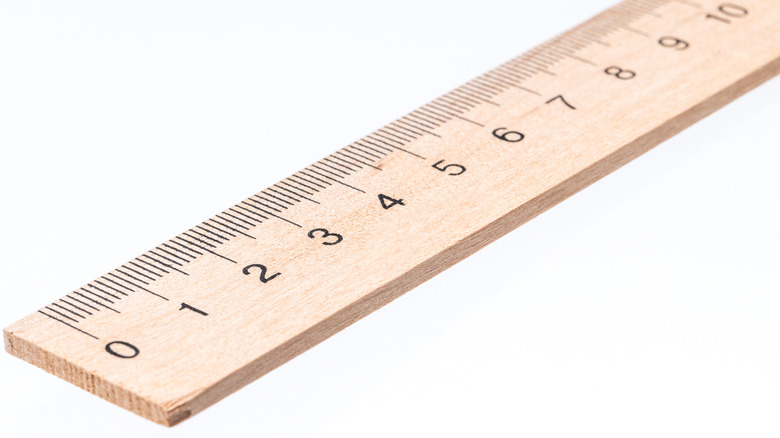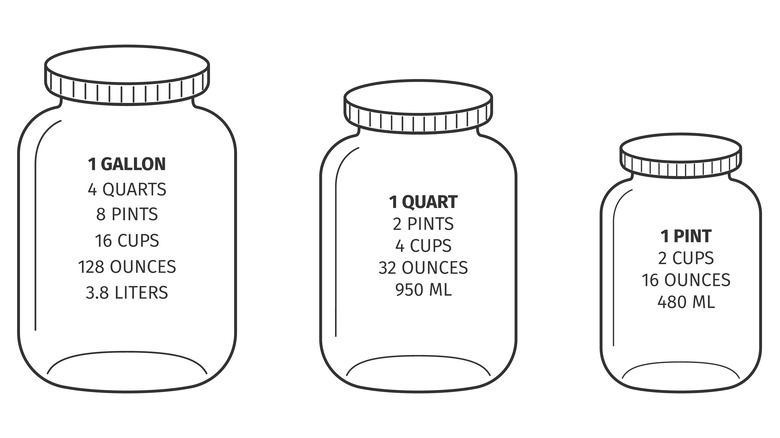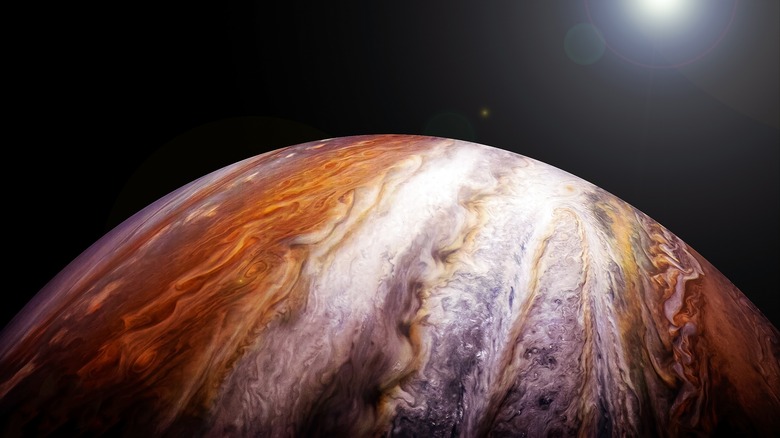Here's Why Scientists Added New Units To The Metric System
The metric system has a fascinating history. The last decades of the 18th century were marked by widespread discontent, violence, and horror in France. The 1789 French Revolution, per History, was marked by tremendous bloodshed. The Reign of Terror alone saw more than 17,000 people executed.
The revolution was largely sparked by the French people's dissatisfaction with their lot. A lack of food left prices high, and combined with the burden of taxation, this led the majority to organize themselves for drastic action. Per Britannica, the National Assembly that resulted set about making their grievances heard. One such grievance, odd as it may seem, was the complicated array of different units of measurement the country used. Over a period of several years from 1791, the French Academy of Sciences defined the measurement of a meter, liter, gram, and the milli- and centi- measurements that is derived from them. The system, being easily divided and multiplied by ten, was clear and simple; the motto was "for all people, for all time" when it became officially recognized across France in 1799.
As widespread as the metric system is around the world, as user-friendly as it was intended to be, there have been times when new units and measurements have had to be added to it. Scientists, it seems, need to be able to present really, really big numbers more easily.
New units of measurement
As the National Institute of Standards and Technology reports, uniformity of measurements can be a crucial factor in international projects. To help ensure this, no less than 54 countries collaborated on the Convention of the Meter, an agreement that ensures any changes to the metric system, now known as the International System of Units (SI), are shared and understood.
According to Britannica, the International System of Units (SI) was born in 1960. Before this, measurements were established in simple terms. Per Merriam-Webster, the centimeter-gram-second system, in which length, mass, and time were measured using the respective terms, was used. Since the establishment of the metric system during that turbulent era of French history, the prefixes used have had to be expanded upon.
Enormous calculations, such as determining the mass of planets, require a system that's a little more sophisticated. Therefore, new units have been added to the metric system.
Weighing Jupiter takes some doing
A kilogram equals 1,000 grams. A meter equals 100 centimeters. While these numbers are easy enough to keep track of, numbers go very high very quickly. There are six zeroes in one million, for instance, nine in one billion, and 12 in one trillion. ThoughtCo reports that a vigintillion is the number one followed by 63 zeroes.
As the National Physical Laboratory states, the goal of International System of Units (SI) is to make communication of measurements and data as universal as possible. The statement reads: "When our measurements get very large (or very small), the numbers we use to express these measurements using SI base units or SI derived units also become very large (or very small) and so more difficult to interpret."
With this in mind, following a General Conference on Weights and Measures vote, four new prefixes have been added to the metric system: the ronto, quecto, ronna, and quetta. As described by USA Today, a quecto is 10 to the negative 30th power; a ronto is 10 to the negative 27th power; a ronna is 10 to the 27th power, and a quetta is 10 to the 30th power.
Jupiter, per NASA, is the biggest planet in the solar system. According to The Washington Post, Earth weighs about 6 ronnagrams, while Jupiter weighs around 1.9 quettagrams. When dealing with numbers as mind-boggling as these, a movement of several decimal places makes things look much more manageable at a glance.


